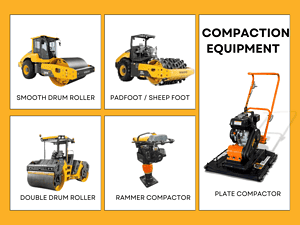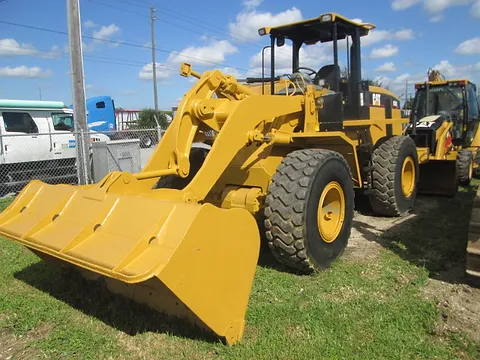Do you need an excavator bucket of the right size for your construction project? Many people have this problem, worrying that choosing the wrong bucket size will waste your money and time and make your project difficult to progress. Whether you are moving earth, gravel, or rock, choosing the right bucket size is very important. Let’s learn how to choose the size through this article.
The ideal Capacité de godet d'excavatrice depends on factors like project type, material, and soil conditions. Larger buckets move more material per scoop but may cause slower cycles with heavier soils. Conversely, smaller buckets are ideal for precision work but may require more cycles. Understanding your project’s needs will help you select the right capacity for optimal performance and cost-efficiency.
Now, let’s dive deeper into how to choose the right excavator bucket capacity for your specific project and materials.

Table des matières
BasculerWhy Bucket Capacity Matters in Excavation Projects
The bucket volume refers to the capacity of the bucket and how much material it will hold in a single dip. The volume will be expressed in either a metric measurement like cubic meters (m³) or in cubic yards. Remember to
use actual measurements you can trust, not just the manufacturer’s GM numbers. Selecting the right bucket size is critical if you want your machine to operate at peak performance for the least cost and complete the job on
time.
The Role of Excavator Bucket Capacity in Performance
Having the right bucket can have a big impact on the efficiency and productivity of the excavatrice. The bigger the bucket, the more material you can move per scoop, reducing the number of cycles needed to do the job. However, if the bucket is so big the machine struggles to take a bite, you might have too much bucket, leading to slower cycle times and excess wear.
| Capacité du seau (M³) | Material Moved per Scoop | Impact on Excavator Performance |
| 0.03 – 0.15 | Small amounts (e.g., loose dirt, small rocks) | Ideal for small, confined spaces; slower cycles |
| 0.15 – 0.50 | Medium amounts (e.g., gravel, sand) | Balances speed and material movement for most projects |
| 0.50 – 1.50 | Large amounts (e.g., clay, dirt) | Speeds up large-scale projects but requires strong machinery |
Factors Influencing the Decision
The right decision results from considering all the factors discussed in this section. As the material being excavated becomes lighter, in general, choose a larger bucket. Matching the size of the bucket to the machine determines the productivity of an excavator. Generally, excavators are available in a range of sizes and come with several suitable bucket options depending on the job at hand.

How to Determine the Ideal Excavator Bucket Capacity
As you work through your list of considerations in this section, you will be able to make a good decision. However, keep the following statement in mind as you make your final decision. As the material you are moving becomes lighter, most likely you are either going to pick a larger bucket, remove the teeth or shrouds from the bucket, or hold the teeth open. The best digger wants the biggest bucket he or she can use in all conditions. The correct size of the bucket determines the productivity of an excavator. Excavator buckets are manufactured in various sizes and are available with a variety of fastener options for teeth and shrouds.
Evaluating Project Scope and Requirements
The size of bucket you choose depends on several factors, such as the material you’re excavating, the size of the machine, and the type of work. Excavators come in different sizes, and each size machine might have a variety of sizes of buckets that are appropriate for the jobs you need to do.
| Type de projet | Typical Excavator Bucket Capacity (m³) | Ideal Bucket Size |
| Residential Excavation | 0.03 – 0.15 | Small Bucket (0.03-0.15 m³) |
| Commercial Excavation | 0.15 – 0.50 | Medium Bucket (0.15-0.50 m³) |
| Large-Scale Construction | 0.50 – 1.50 | Large Bucket (0.50-1.50 m³) |
Excavator Size and Capacity Matching
You will choose the right bucket according to the following checklist. As the material gets lighter, generally, you’ll put a bigger bucket on, take the teeth or shrouds off, or hold the teeth open. The best digger in the world
wants the biggest bucket they can use in all situations. Your production is dictated by the size of the bucket. Excavator buckets come in different sizes and can be ordered in bolt-on teeth, weld-on shrouds, and side cutters.
| Excavator Size | Suitable Bucket Capacity (m³) | Example Projects |
| Mini Excavators (1-5 tons) | 0.03 – 0.15 | Residential, Small Digging |
| Mid-Size Excavators (5-15 tons) | 0.15 – 0.50 | Commercial, Landscaping |
| Large Excavators (15+ tons) | 0.50 – 1.50 | Road Construction, Mining |
The Role of Weight and Load in Excavator Performance
The primary factor in selecting the right excavator bucket size is the type of material you’ll be digging. Once you’ve considered all these factors, you’ll be able to make a good decision. In the end, remember this saying: as the material gets lighter, you’re going to put a bigger bucket on, take the teeth or the shrouds off, or hold the teeth open. The best digger in the world uses the biggest bucket they can in all situations. The bucket is the production of an excavator. Excavator buckets come in various sizes and can be purchased with teeth, shrouds, side cutters, and so on.
| Material Type | Suggested Bucket Size (m³) | Considerations |
| Loose Dirt or Gravel | 0.03 – 0.30 | Small to medium bucket to minimize cycle time |
| Clay or Hard Soil | 0.30 – 0.50 | Medium to large bucket for efficient digging |
| Rocks or Boulders | 0.50 – 1.50 | Larger buckets for handling heavy, dense material |
How Bucket Capacity Affects Excavator Performance in Different Soil Types and Specialized Tasks
Soil type and project type significantly affect the excavator bucket capacity you need. Here’s how different soil conditions and specialized tasks influence the bucket size selection.
Soil Type and Excavation Efficiency
For example, loam or clay soil is relatively easy to move, meaning a larger bucket isn’t necessary. On the other hand, if you’re digging in rocky soil, you’ll need a smaller bucket to maintain productivity because it’s harder to move. Selecting the right bucket size for the type of material you’ll be moving will have a big impact on the performance of your machine.
| Soil Type | Ideal Bucket Capacity (m³) | Reason for Size Choice |
| Loose Gravel | 0.03 – 0.30 | Requires less power, so a smaller bucket is sufficient |
| Clay | 0.30 – 0.50 | Denser and more compact; requires larger bucket to handle efficiently |
| Hard Rock | 0.50 – 1.50 | Large buckets are needed to handle dense and heavy material |
Choosing Bucket Capacity for Specialized Tasks
Different jobs call for different bucket sizes. If you’re doing demolition work and picking concrete off the ground, you may want a smaller, more precise bucket. If you’re building a road or working on a project where you need to move a lot of material, you’ll probably want a bigger bucket.
| Task Type | Recommended Bucket Capacity (m³) |
| Road Construction | 0.50 – 1.50 |
| Demolition | 0.15 – 0.30 |
| Material Handling | 0.30 – 0.50 |

Bucket Capacity and Its Impact on Project Efficiency
It affects speed by: The proper bucket capacity allows you to find the maximum speed your machine is capable of with it. Lowering the capacity increases speed but hurts production. Increasing capacity reduces speed as soon as you reach the weight that the machine can handle. The bucket capacity greatly impacts fuel consumption: Fuel cost often exceeds the cost of wear parts for earthmoving.
The amount of material a machine moves per hour defines its fuel consumption. The correct size bucket will move the most amount of material and provide the best fuel cost per unit of materials moved. Missized buckets will cost you more fuel per yard moved. It affects overall cost per yard to move it with any equipment. It affects machine balance by adding material to the bucket. A correctly sized bucket makes you the most productive and efficient.
Speed and Productivity
Larger buckets also cost more. They will generally move more material per cycle but may not be efficient enough. If you are moving from point A to point B less than a few hundred feet away, a smaller bucket might be perfect. If you have long hauls to make , a larger bucket will typically show a better cost per yard hauled.
| Bucket Size | Speed and Productivity Impact |
| Small Bucket | Slower cycle time, less material moved |
| Medium Bucket | Balanced cycle time and material movement |
| Large Bucket | Faster cycles for large projects, but can strain the machine if too large |
Fuel Consumption and Cost
Fuel efficiency is affected by the size of bucket that you are using. A bigger bucket can burn more fuel, especially if it isn’t the proper bucket for the material. Using too small a bucket means you have to make more scoops so the engine is working harder. Therefore, you burn more fuel over time.
| Bucket Size | Fuel Efficiency Impact |
| Smaller Bucket | More cycles, higher fuel use |
| Larger Bucket | Potential higher fuel use per cycle, but fewer cycles overall |
Machine Durability
Using the wrong bucket size for your machine can tear it up in minutes. Overloading a small bucket causes wear and tear and wears it out faster than a larger bucket. Underloading a larger bucket means that it’s not working as efficiently as it should. Wearing out the machine is another serious consideration. Every time you replace wear parts, you are assuming it won’t cause any other damage.
| Bucket Size | Machine Durability Impact |
| Small Bucket | Less strain on the machine, but slower progress |
| Large Bucket | Can cause machine strain if not suited for the material |
Common Mistakes When Choosing Excavator Bucket Capacity
Choosing the wrong excavator bucket capacity can lead to inefficiencies, higher costs, and unnecessary machine wear. Let’s explore some common mistakes and how to avoid them.
Overestimating Bucket Size
It’s important to choose the right size bucket for the job at hand. If you’re trenching, you’ll want a narrower bucket to dig a precise trench. If you’re digging footings or basements, you’ll probably want a wider bucket to move more material more quickly. If you’re loading material, you may opt for a larger capacity bucket to fill the truck faster.
Overestimating bucket size can cause:
| Mistake | Resulting Issues |
| Overestimating Bucket | Slower cycles, increased fuel consumption, machine strain |
Underestimating Bucket Size
The bucket you select needs to be large enough to get the job done in the fewest number of cycles possible. A smaller bucket means more cycles, more labor cost, and more wear and tear on your machine. Smaller is not better—although it’s easier to justify the expense in the short term because small buckets cost less.
Underestimating bucket size can cause:
| Mistake | Resulting Issues |
| Underestimating Bucket | Slower progress, higher labor costs |
Ignoring Terrain and Soil Type
The dense the material, the more capacity you need. Clay requires a larger bucket. Conversely, you can handle sand with a smaller bucket. If you don’t consider the material you’re digging in, you’re not going to do a very efficient job and you’re going to burn more fuel.
Ignoring soil type can cause:
| Mistake | Resulting Issues |
| Ignoring Soil Type | Reduced efficiency, more fuel consumption |

How to Optimize Your Excavator Bucket Capacity
Make sure to choose the right size bucket for the application. It’s better to run a machine with a bucket that’s a little small than too big. Running with a bucket that’s too big can cause stress and damage to the digging arm, cylinders and pins.
You also won’t be able to dig very well. If the width is right but a little too small in depth, it’s a lot better to have it a little shallow than deep. If you can’t reach the bottom of the trench you can always go back and clean it up but if the bucket is too big you can’t do anything. When you’re comparing two similar buckets, get the bigger capacity if all other factors besides capacity are equal. Run a smooth edge. The exception to this is if you need to break up hard, frozen ground or frost.
Choosing the Right Capacity for Specific Materials
The type of material you are moving directly relates to the size bucket you need. The denser the material, the larger the bucket you require. You need a larger bucket for things like clay, rock or asphalt because you need to carry larger loads. However, you can use a smaller bucket for lighter materials like sand or loose gravel.
Tips for choosing the right bucket size based on material:
- Light materials, like sand or loose dirt, are less dense and require smaller buckets (0.03 – 0.30 m³) to move more material per scoop.
- Dense materials, such as clay, rock, or asphalt, need larger buckets (0.30 – 1.50 m³) to ensure the machine can handle the weight without overloading.
| Material Type | Ideal Bucket Size (m³) | Reason for Size Choice |
| Light Materials (e.g., sand) | 0.03 – 0.30 | Small buckets can move a larger volume quickly |
| Dense Materials (e.g., clay, rock) | 0.30 – 1.50 | Larger buckets needed to handle heavy, compact material |
Adjusting Bucket Size Based on Project Phases
The phase of the project can affect your bucket choice as well. If you’re doing grading and site prep, you need a big bucket to move a lot of material quickly. In contrast, if you’re trenching or doing fine grading, you might want a smaller, more precise bucket so you don’t over-excavate.
Tips for adjusting bucket size based on project needs:
- During grading, you need a larger bucket (0.50 – 1.50 m³) to quickly cover large areas.
- For trenching or detailed work, a smaller bucket (0.15 – 0.30 m³) is ideal for precise cuts.
| Project Phase | Recommended Bucket Capacity (m³) | Reason for Size Choice |
| Grading | 0.50 – 1.50 | Larger buckets for moving larger amounts of material |
| Trenching | 0.15 – 0.30 | Smaller buckets for precision and detailed work |

Consider Machine Capacity
The size of the bucket you can put on an excavator is directly related to the performance of the machine as well. For example, mini excavators (1-5 tons) are better suited to smaller buckets (0.03 – 0.15 m³). Large excavators (15+ tons), on the other hand, can handle larger buckets (0.50 – 1.50 m³) and move a lot more dirt.
| Excavator Size | Suitable Bucket Size (m³) | Example Projects |
| Mini Excavators (1-5 tons) | 0.03 – 0.15 | Small residential or landscaping jobs |
| Mid-Size Excavators (5-15 tons) | 0.15 – 0.50 | Commercial site preparation or excavation |
| Large Excavators (15+ tons) | 0.50 – 1.50 | Heavy-duty construction, mining, road work |
When it comes to productivity on the site, one way to measure efficiency is to consider the material you are moving. Are you running peaks or are you trying to move mud? Every job is different, so if this is a big job with a lot of dirt to haul, you may want to be able to move more dirt in fewer scoops. If you are wrestling hills, moving dirt is a primary concern, and your emphasis may be on getting the maximum amount of dirt in one bucket. If you are grading sub-grade, finishing up, or doing fuel dirt work for the final pads or ditches, you are not in a hurry.
Conclusion
Ultimately, the ideal excavator bucket capacity will depend on your specific project needs and site conditions. Take the time to evaluate all factors, like the type of material you’ll be digging, the reach and breakout force you need, and the size of your machine. Once you have all the information, you can make the best choice to get the job done as efficiently and cost-effectively as possible.
Suivez-nous sur:Youtube.










